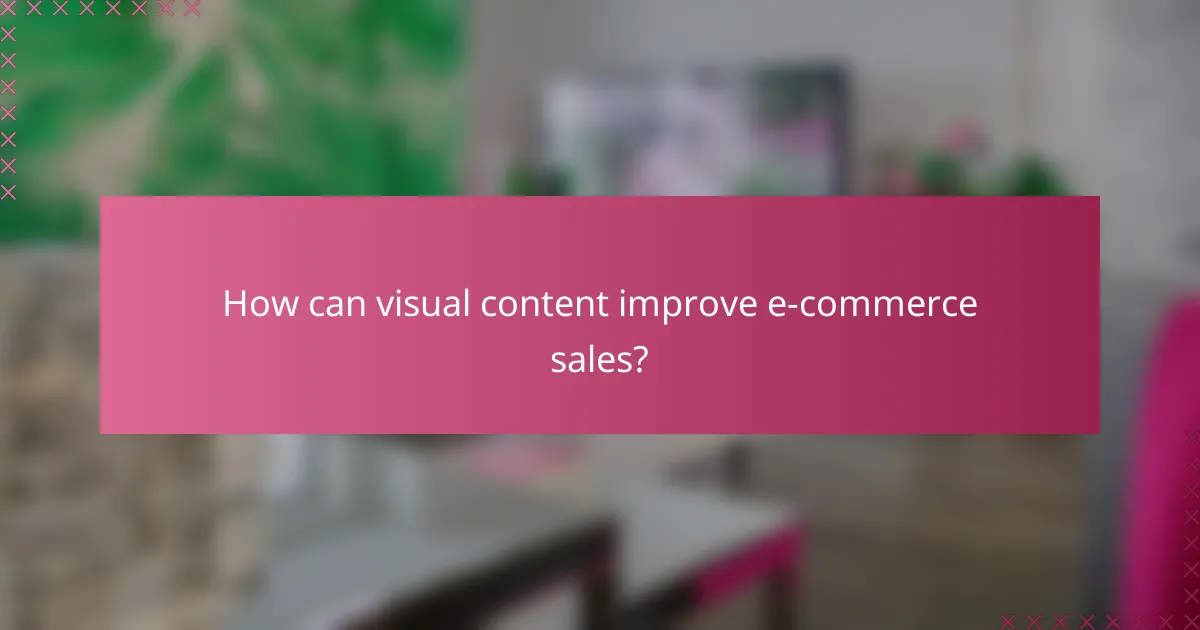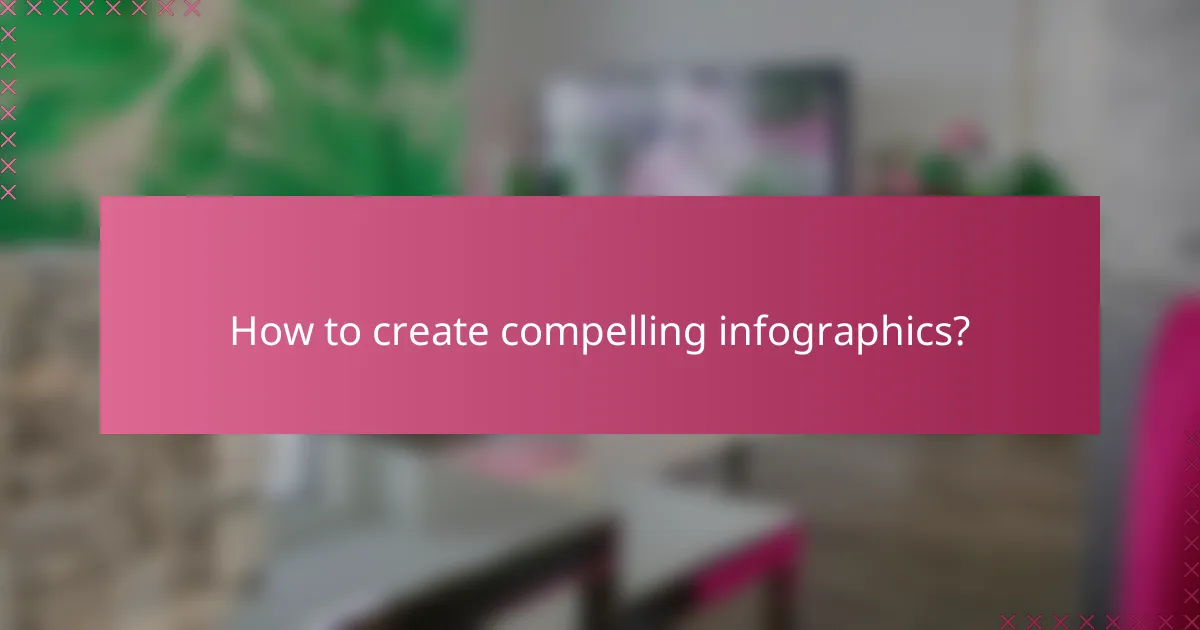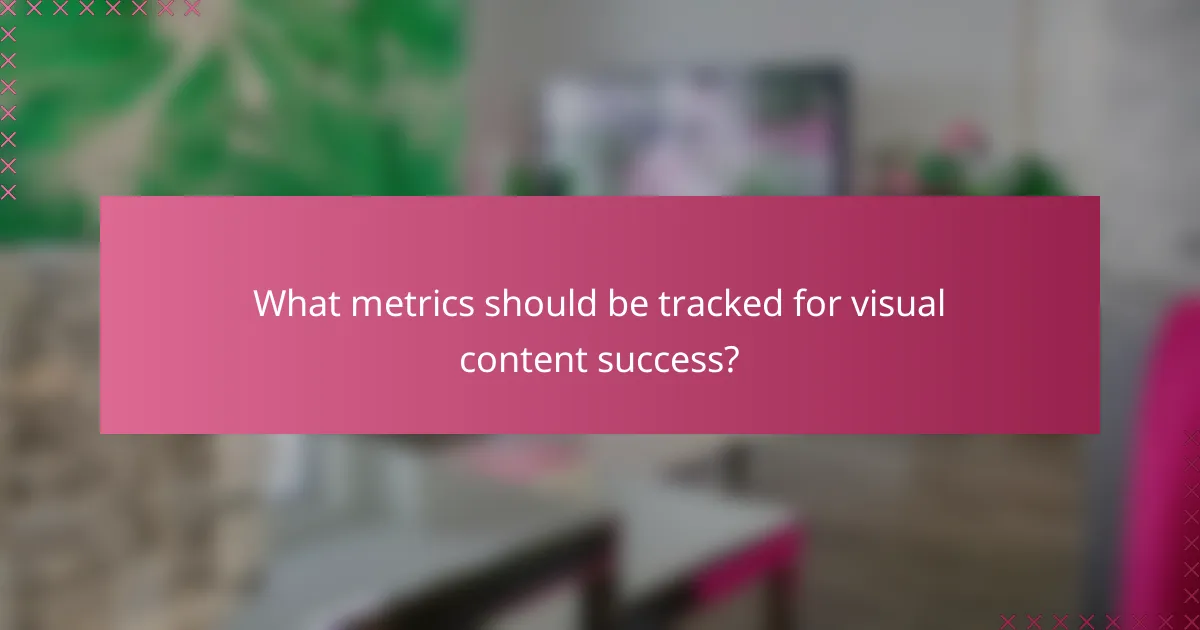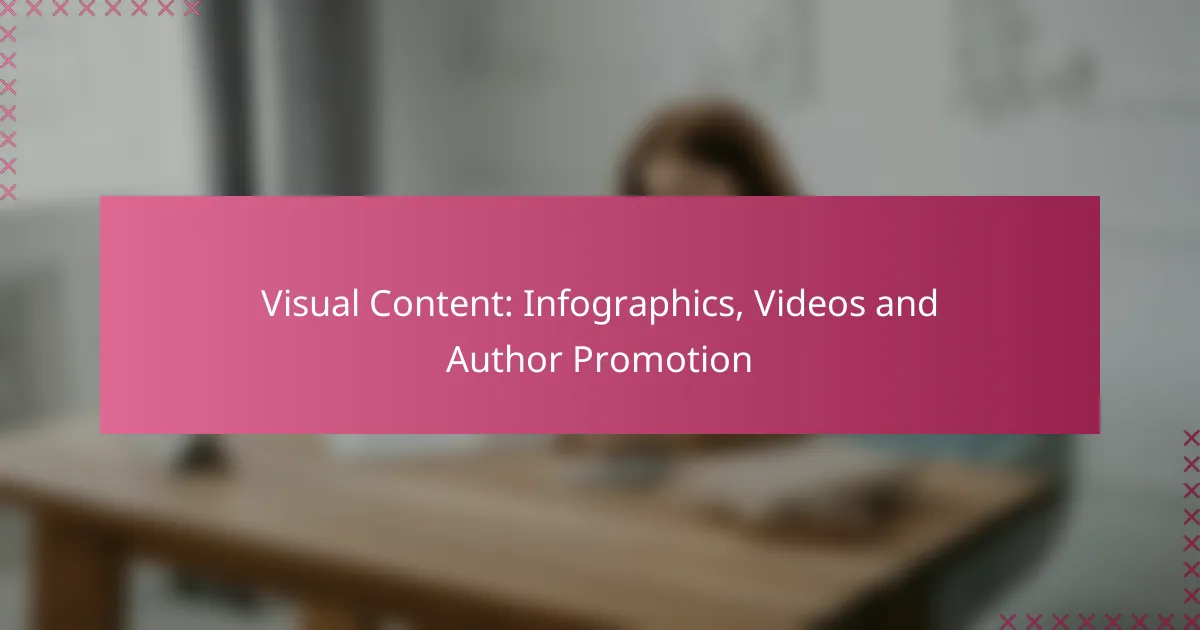Visual content plays a crucial role in enhancing e-commerce sales by effectively capturing attention and delivering information swiftly. Utilizing infographics, videos, and author promotion not only boosts engagement but also increases conversion rates and brand visibility. By combining clear data presentation with engaging design, these tools can transform complex information into easily digestible formats, fostering a deeper connection with the audience.

How can visual content improve e-commerce sales?
Visual content significantly enhances e-commerce sales by capturing attention and conveying information quickly. Effective use of infographics, videos, and author promotion can lead to increased engagement, higher conversion rates, and improved brand visibility.
Increased engagement through infographics
Infographics simplify complex information, making it easier for potential customers to understand product benefits. By presenting data visually, you can engage users more effectively than with text alone.
Consider using infographics to illustrate product comparisons or showcase customer testimonials. This approach can lead to higher shares on social media, increasing your reach and attracting more visitors to your site.
Higher conversion rates with video content
Video content can significantly boost conversion rates by providing a dynamic way to showcase products. Customers are more likely to purchase after watching a product demonstration or review, as videos build trust and provide clarity.
Incorporate short, engaging videos on product pages or use them in email marketing campaigns. Aim for videos that are under two minutes long to maintain viewer interest and encourage action.
Enhanced brand visibility with author promotion
Promoting the authors behind your content can enhance brand visibility and credibility. When customers see the faces and stories behind the products, they are more likely to connect emotionally and trust your brand.
Utilize social media platforms to highlight your authors, share their insights, and engage with your audience. This personal touch can differentiate your brand in a crowded market and foster customer loyalty.

What types of visual content are most effective?
Infographics, videos, and visual storytelling are among the most effective types of visual content. Each serves a unique purpose and can significantly enhance engagement and understanding when used appropriately.
Infographics for data presentation
Infographics are powerful tools for presenting complex data in a visually appealing way. They combine graphics and text to simplify information, making it easier for audiences to digest and retain key points.
When creating infographics, focus on clarity and relevance. Use a clean layout, limit the amount of text, and highlight the most important data. Tools like Canva or Piktochart can help streamline the design process.
Common pitfalls include overcrowding the infographic with too much information or using unclear visuals. Aim for a balance that informs without overwhelming.
Videos for product demonstrations
Videos are highly effective for showcasing products, as they allow potential customers to see items in action. A well-produced video can illustrate features, benefits, and usage in a way that static images cannot.
Keep product demonstration videos concise, ideally under two minutes, to maintain viewer interest. Highlight key features early and include a call to action at the end to guide viewers on the next steps.
Ensure high production quality with good lighting and sound. Avoid lengthy introductions; get straight to the product to maximize engagement.
Author promotion through visual storytelling
Visual storytelling is an impactful method for promoting authors and their work. By using images, graphics, and videos, authors can create a narrative that resonates with their audience, making their message more memorable.
Consider using platforms like Instagram or YouTube to share behind-the-scenes content, book trailers, or personal stories related to your writing journey. This approach fosters a deeper connection with readers.
Avoid overly promotional content; instead, focus on authentic storytelling that invites engagement. Balance promotional posts with personal insights to create a relatable brand image.

How to create compelling infographics?
Creating compelling infographics involves combining clear data presentation with engaging design elements. Effective infographics should communicate information quickly and attractively, making complex data easily digestible for your audience.
Use clear data visualization techniques
Data visualization techniques are essential for making your infographic effective. Use charts, graphs, and icons to represent data visually, ensuring that each element is easy to understand at a glance. Stick to a few types of visualizations to avoid overwhelming viewers.
Common choices include bar charts for comparisons, pie charts for proportions, and line graphs for trends. Aim for simplicity and clarity, as clutter can confuse your audience and dilute your message.
Incorporate brand colors and logos
Incorporating brand colors and logos helps reinforce your identity and makes your infographic recognizable. Use a consistent color palette that aligns with your brand guidelines, ensuring that the colors complement each other and enhance readability.
Position your logo strategically, such as in a corner or at the bottom, without overshadowing the main content. This approach maintains focus on the information while subtly promoting your brand.
Focus on audience relevance
Understanding your audience is crucial for creating relevant infographics. Tailor your content to address their interests, needs, and pain points, ensuring that the information resonates with them. Conduct audience research to identify what topics are most engaging.
Consider using language and examples that your audience can relate to. For instance, if targeting a local market, include statistics or references that reflect regional trends or issues, making the content more applicable and impactful.

What are best practices for video marketing?
Best practices for video marketing focus on creating engaging, high-quality content that resonates with your audience. Effective video marketing incorporates clear calls to action and is tailored for the platform where it will be shared.
Short, engaging content for social media
Videos for social media should be concise, ideally lasting between 15 seconds to 1 minute. This duration captures attention quickly and encourages viewers to engage without losing interest.
Utilize eye-catching visuals and compelling narratives to draw viewers in. Consider using subtitles since many users watch videos without sound, especially on platforms like Facebook and Instagram.
High-quality production values
Investing in high-quality production is crucial for establishing credibility. This includes clear audio, sharp visuals, and professional editing. Poor production can detract from your message and diminish viewer trust.
While high-quality equipment can be costly, many smartphones today offer excellent video capabilities. Focus on good lighting and sound to enhance your production without breaking the bank.
Call-to-action integration
Integrating clear calls to action (CTAs) within your videos is essential for guiding viewer behavior. CTAs can encourage viewers to visit your website, subscribe to your channel, or follow your social media accounts.
Place CTAs strategically throughout the video, such as at the beginning, middle, and end, to maximize impact. Use actionable language like “Learn more,” “Subscribe now,” or “Join us today” to prompt immediate responses.

How to promote authors effectively?
Promoting authors effectively involves leveraging various strategies to enhance their visibility and reach. Key methods include utilizing social media, engaging in guest blogging, and collaborating with influencers to amplify their work.
Utilize social media platforms
Social media platforms are essential for promoting authors, as they provide direct access to a broad audience. Authors should create profiles on popular platforms like Facebook, Twitter, Instagram, and LinkedIn to share their work, engage with readers, and build a community.
To maximize impact, authors can post regular updates, share behind-the-scenes content, and interact with followers. Utilizing hashtags relevant to their genre can also help increase visibility and attract new readers.
Leverage guest blogging opportunities
Guest blogging allows authors to reach new audiences by contributing content to established blogs in their niche. This strategy not only showcases their expertise but also drives traffic back to their own platforms.
Authors should identify popular blogs that align with their themes and pitch relevant topics. Including a brief author bio with links to their website or social media can effectively convert readers into followers.
Engage in influencer collaborations
Collaborating with influencers can significantly boost an author’s visibility. Influencers often have dedicated followings that trust their recommendations, making them valuable partners for promoting books or content.
Authors can reach out to influencers for joint projects, such as interviews, book reviews, or social media takeovers. Offering free copies of their work or exclusive content can incentivize influencers to participate and share with their audience.

What metrics should be tracked for visual content success?
To evaluate the success of visual content, focus on metrics that reflect audience interaction and reach. Key indicators include engagement rates, shares, and conversion metrics, which provide insights into how well your content resonates with viewers.
Engagement rates and shares
Engagement rates measure how actively viewers interact with your visual content, including likes, comments, and shares. A higher engagement rate indicates that your audience finds the content valuable or entertaining, which can lead to increased visibility and reach.
To calculate engagement rates, divide the total interactions by the total views, then multiply by 100 to get a percentage. For example, if a video has 1,000 views and 100 interactions, the engagement rate is 10%. Aim for engagement rates in the low to mid-teens for optimal performance.
Shares are particularly important as they extend your content’s reach beyond your immediate audience. Encourage sharing by creating visually appealing and informative content that resonates with your target demographic. Consider adding social sharing buttons to facilitate this process.
